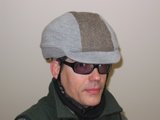Wide Margins
Wendell Berry, in his essay, “Solving for Pattern,” offers a number of criteria of what he calls a “good solution.” Among these is that a good solution has wide margins.
The idea, as I understand it, is that a good solution is one in which you can fuck up royally and still succeed. He cites the example of Earl Spencer, a farmer who managed to make his farm profitable by doing more with less, the point being that when you develop solutions whose tolerances are way too tight, too much can go wrong too easily and consequently, nothing really works.
I mention this because the lesson has been for me these last two Thursday nights that the bicycle has such margins.
Last week, for instance, a person (admittedly one like no other) could take a swan dive on metal diamonds and still be up for a night out six days later. And then, tonight, another human being can roll his bike smack into the front of a speeding car and still arrive for tipsy karaoke singing less than an hour afterwards.
Compare either of these to similarly spectacular accidents on four wheels with a motor and all of us would have been attending two funerals in the past 8 days, which isn’t to say that we all shouldn’t be saying, “Fuck! Be careful!” but which is to notice that if you’re gonna be a stupid idiot, then there’s no better place to do so than on a bike.
Put the fun between your legs, definitely, but I guess it’s worth noticing that if you’re dead, it doesn’t matter where the fun is, anyway.
The other thing that’s become patently obvious is that while homing in on and catching up to the ride is kind of like a satisfying detective novel, what I really miss is arriving at the start of things, having no real idea how they’ll turn out, but being confident that wide margins will prevail.
The idea, as I understand it, is that a good solution is one in which you can fuck up royally and still succeed. He cites the example of Earl Spencer, a farmer who managed to make his farm profitable by doing more with less, the point being that when you develop solutions whose tolerances are way too tight, too much can go wrong too easily and consequently, nothing really works.
I mention this because the lesson has been for me these last two Thursday nights that the bicycle has such margins.
Last week, for instance, a person (admittedly one like no other) could take a swan dive on metal diamonds and still be up for a night out six days later. And then, tonight, another human being can roll his bike smack into the front of a speeding car and still arrive for tipsy karaoke singing less than an hour afterwards.
Compare either of these to similarly spectacular accidents on four wheels with a motor and all of us would have been attending two funerals in the past 8 days, which isn’t to say that we all shouldn’t be saying, “Fuck! Be careful!” but which is to notice that if you’re gonna be a stupid idiot, then there’s no better place to do so than on a bike.
Put the fun between your legs, definitely, but I guess it’s worth noticing that if you’re dead, it doesn’t matter where the fun is, anyway.
The other thing that’s become patently obvious is that while homing in on and catching up to the ride is kind of like a satisfying detective novel, what I really miss is arriving at the start of things, having no real idea how they’ll turn out, but being confident that wide margins will prevail.


2 Comments:
...put the fun between your legs? rawr!
That's an interesting concept. Quite timely too as in my quantitative methods class its all about narrowing the confidence interval to make our hypothesis more precise, not just more accurate.
Post a Comment
<< Home